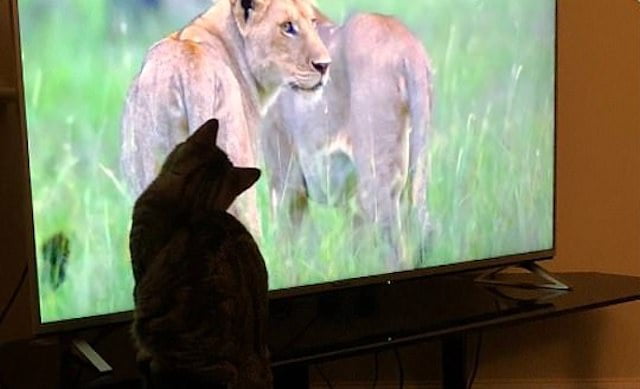‘The earliest cat-like carnivores, which were to evolve into the family Felidae appeared between 30 and 40 million years ago, in the Late Eocene and Early Oligocene. Two main branches developed: the Sabre-tooths and the True Cats.’ – Dr Desmond Morris in Cat World.

Sabre-tooths
These cats had huge curved canine teeth for killing prey. The famous Sabre-tooth tiger is in this category. Some of these early species were larger than today’s lions. They were powerful but slow and could only prey on large lumbering animals. Their prey became extinct and they followed. It is believed that the Sabre-tooths died out 12,000 to 15,000 years ago.

True Cats
The ‘True Cats’ started to evolve during the time of the Sabre-tooths and developed into what we consider a typical cat around 20 million years ago. They developed into ‘medium-sized ambush killers of smaller prey’. Their presence spread by crossing the Bering land-bridge to North America and thence to South America.
The small cats of the New and Old World evolved in parallel over millions of years (New World: Americas, including North America, Central America, and South America – Old World: Africa, Asia, and Europe).
What is left of the cat family after all this evolution is three sub-families:
- The Small Cats (Sub-family Felinae; 30 species)
- The Big Cats (Sub-family Pantherinae; 5 species)
- The Cheetah (Sub-family Acinoonychinae; 1 species)
This makes 36 species of wild cat. However, the categorisation of the wild cat species (taxonomy) is in flux to a certain extent and evolving itself. Readers should be aware of that. And the above analysis is by Dr Morris (a respected zoologist) dated 1996. Things have moved on a little but the basic analysis is correct of course.
With the advent of molecular genetics, genetic material from the species has been analysed to determine the 8 polygenetic (having many sources) lineages of the past 15 million years which are as follows: ocelot, domestic cat, puma, leopard cat, Panthera, Lynx, Caracal and Bay cat (Wild Cat Of The World by Mel and Fiona Sunquist).
Extinction – Human pressure

The 36 wild cat species are found over a ‘vast range from Asia, through Europe and Africa to the Americas’. They are under constant human pressure because of human population growth, commercialism causing habitat loss (the biggest factor), poaching and trophy hunting. Many are endangered to varying degrees and some may become extinct in the wild even within 20 years. Some speculate that the African lion will be gone by then and the tiger is also under huge pressure. As virgin forests and habitats are destroyed by humans the small cats such as the African golden cat and Bay cat are heading towards extinction – total extinction because these cats are not found in zoos or if they are they don’t breed and die out.
The last details are my personal thoughts.

